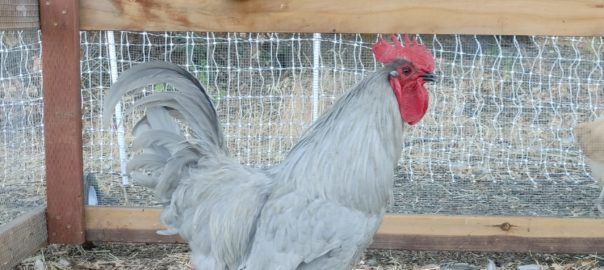One day, Daniel was scanning a local Facebook farm group and noticed a lavender Orpington cockerel for sale. He texted Miranda who okayed the purchase. A few hours later he arrived home from a doctor’s appointment with a 14 week old cockerel he’d picked up on the way home. We hoped the cockerel would change our way of raising chickens for meat.
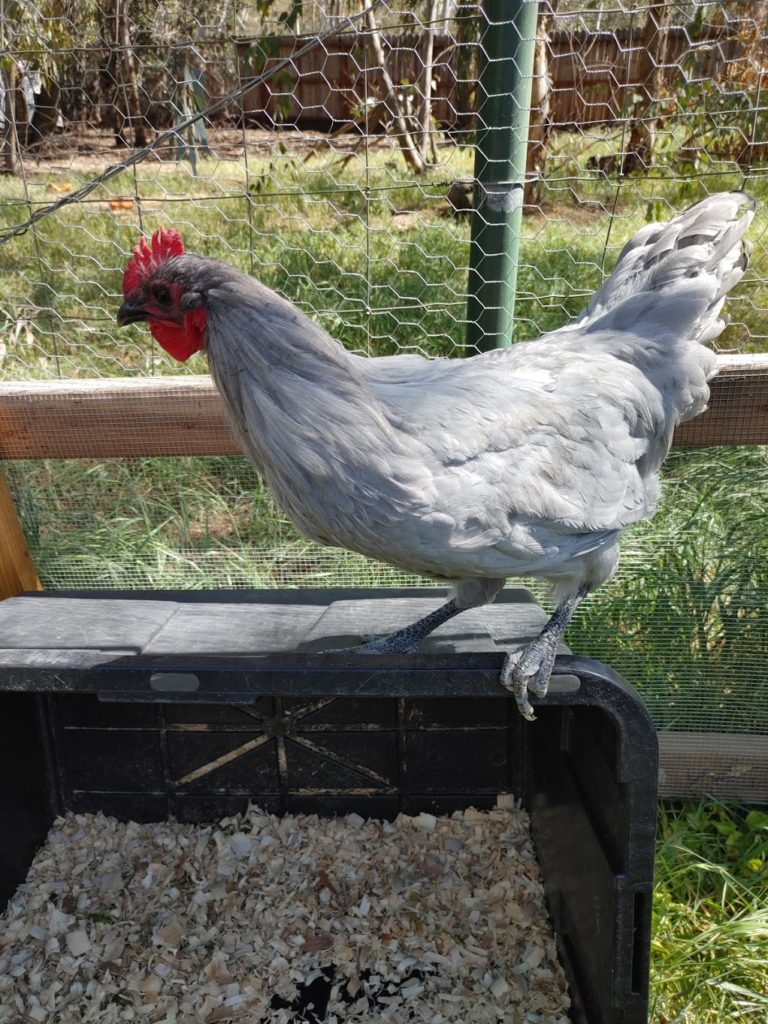
Buying the cockerel wasn’t entirely impulsive. We had kept chickens for eggs and late last year we experimented with meat birds by raising a batch of 100 Cornish-Crosses, the standard meat bird. Because the breeding of most meat birds is proprietary, raising those meat crosses is inherently tied to large, non-local hatcheries that we don’t want to rely on. We want to raise meat birds in a self-sufficient, ethical manner so we decided to experiment with a breeding flock of dual purpose birds that can produce a supply of chicks to raise for meat. We settled on Orpingtons, a breed with some level of heat tolerance and enough brains to take care of themselves. We ordered a round of 12 female Orpingtons with the intention of increasing our egg production in the near term and experimenting with a meat bird breeding flock later on. When Daniel came across the ad for a lavender Orpington cockerel, “later on” seemed to be beckoning with this opportunity to acquire an Orpington sire in a trendy new color.

The cockerel was quite magnificent in his gorgeous light grey feathers that shine slightly purple in certain lights, and he very quickly demonstrated his maleness with a soft, smooth crow. We set him up next to the hens who immediately became obsessed with watching him strut around his tractor. We tasked the kids with finding him a name.
The kids name all the birds because they are much more invested in their names than we are. We are generally content to refer to “the gold one with black stripes” or “the Rhode Island that keeps getting out of the fence.” The kids demand the birds have actual names. In the interests of felicitous filial relations, we have all agreed that non-meat birds may be named after flowers and herbs. After two weeks of listening to bickering about the cockerel’s name, Daniel quietly mentioned one morning that he thought “Sting” would be the perfect name for our bird with the soft, smooth voice. Short for “Stinging Nettle,” of course.
Our 12 recently purchased Orpingtons weren’t laying yet, but we were itching to start hatching some eggs. A few weeks after he arrived, we added our only mature Orpington hen, and two Amerucanas past their laying prime to Sting’s tractor-turned-love-nest to see how well his crowing worked on them. Then we waited the requisite couple of weeks for the eggs to be fertile. Two weeks after putting the breeding flock together, we set up an incubator, opened a couple eggs to confirm they were fertilized, and then started collecting the fertile eggs.
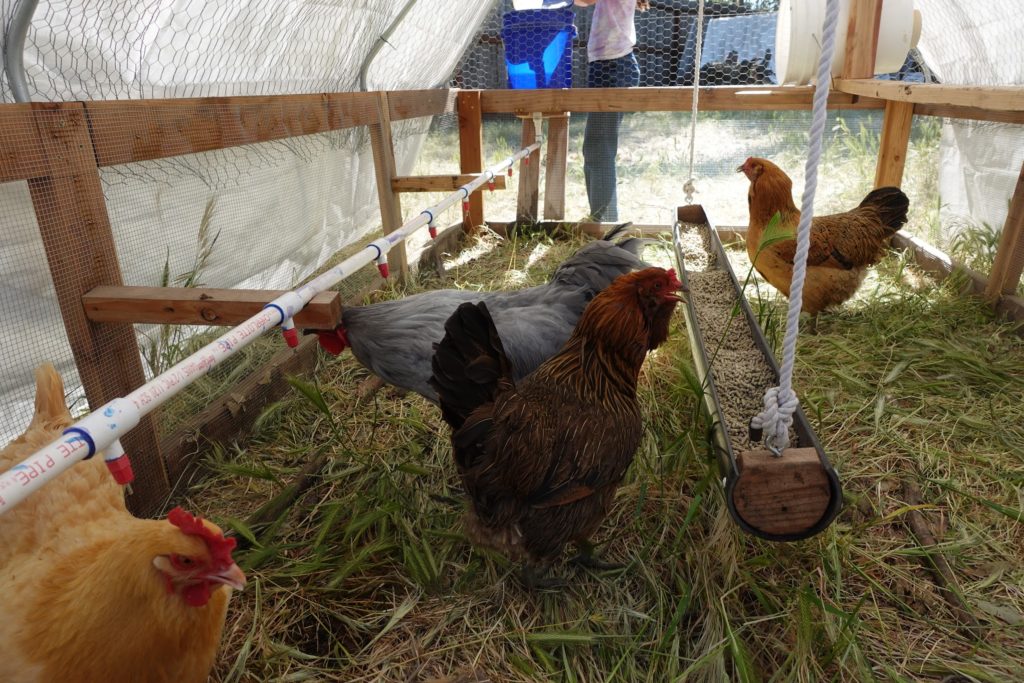
Fertilized eggs can last outside an incubator for about a week after the eggs are laid. That’s because several hens lay eggs in the same nest over multiple days. After about a week one or another hen gets broody and heads to the nest to incubate the eggs for about three weeks. Over the next week, the three hens produced five eggs. We purchased a basic incubator: a plastic box with warmth, humidity, and a means to roll the eggs around. In nature, the brooding bird will roll incubating eggs over and over to keep the developing chick from sticking to the sides. Incubators must do the same thing. In early May, we placed the five eggs in the incubator and hoped that in three weeks chicks would emerge.
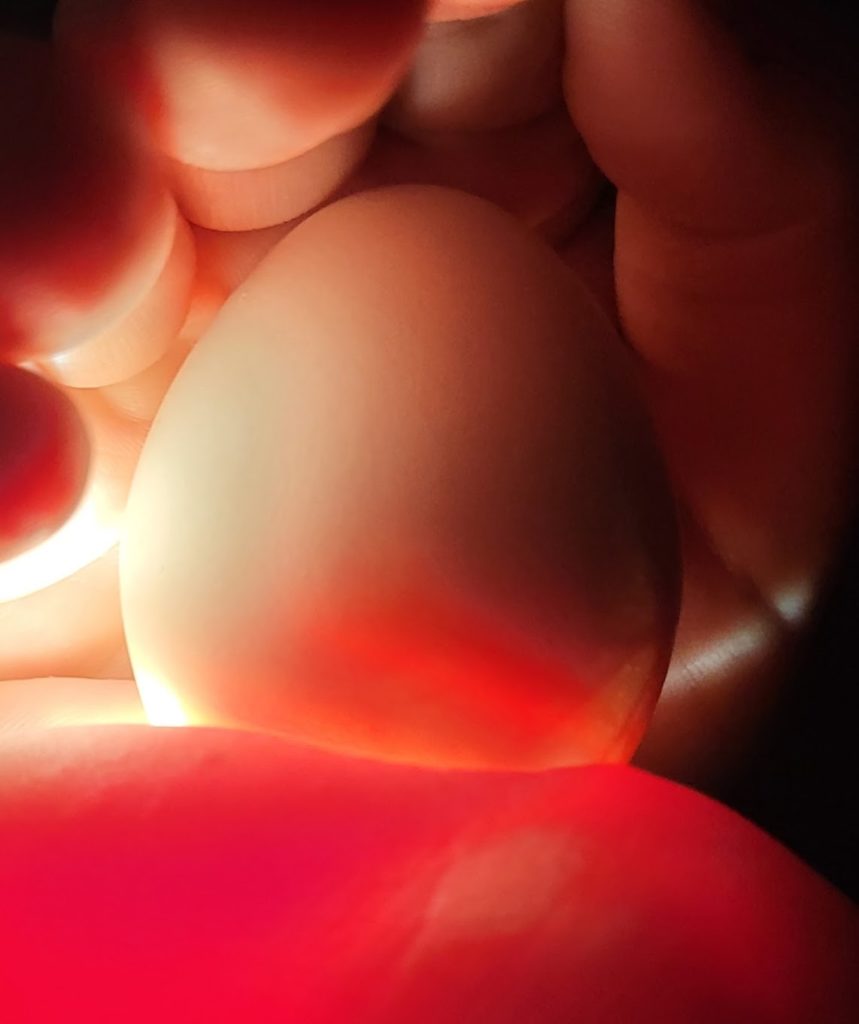
About two weeks after placing the eggs in the incubator, we candled them—with a flashlight, not a candle. This is the twenty-first century. All five eggs were developing; all five showed movement. Much like sonograms in mammals, a picture doesn’t do the reality justice to what you see when you candle developing eggs. Depending on the set-up, it is possible to see the developing bird in exquisite detail. The blood vessels are clearly visible and it is possible to see the yolk and the fetus moving around. Despite seeing movement in all five eggs, it was still impossible to know how many would hatch.
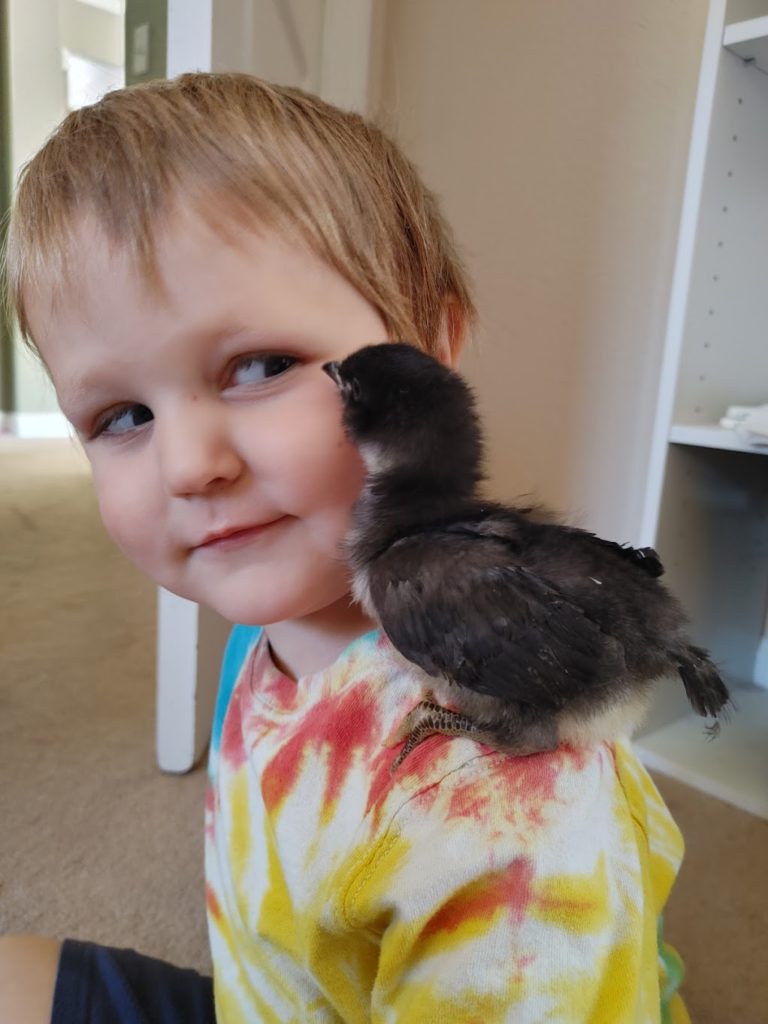
Three weeks and two days after being placed in the incubator, three chicks hatched: two Orpingtons and an Americana-Orpington cross. That is a pretty reasonable hatch-rate for an incubator this cheap and simple. We left them in the incubator for an extra day, then we set them up in a brooder box with food and water, heat and light. After cleaning up the incubator, we set it up again with as many eggs as would fit.
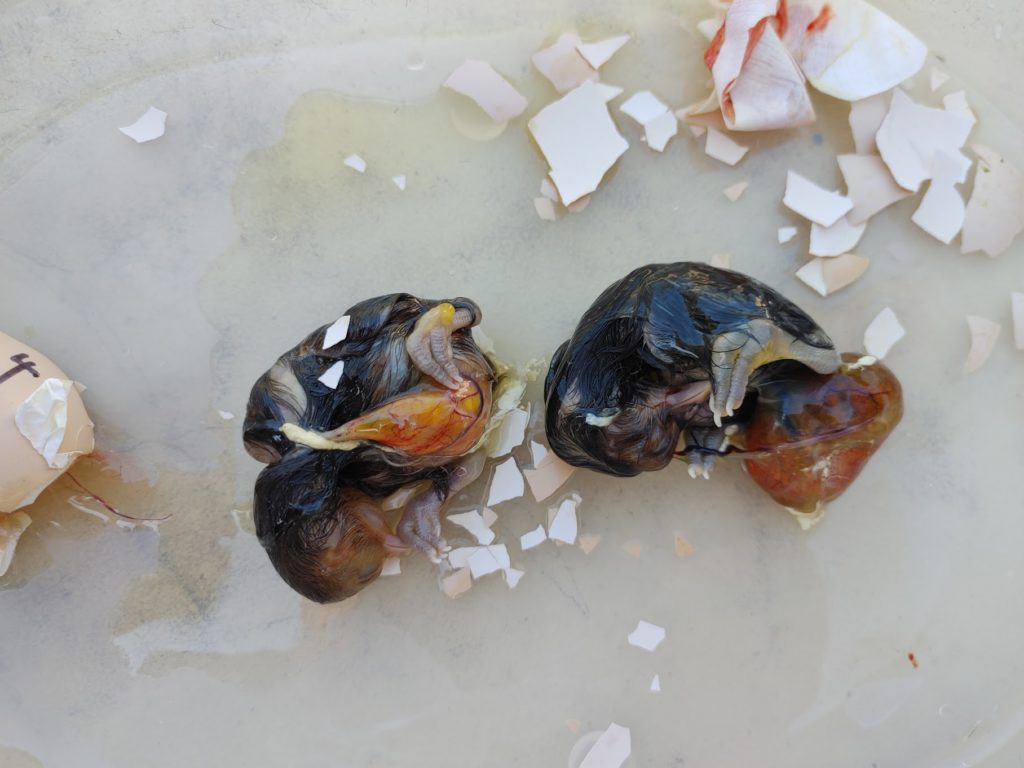
Then we opened up the eggs that didn’t hatch. The kids were both interested and grossed out by the chick fetuses, and we concurred. Our big take-away was that both fetuses were small; they had stopped developing about a week ago. We don’t know why. Perhaps it was inexperience, but the hatch rate was pretty normal. As with all things farm related, we took notes to refine our techniques. The most important piece of this experiment is the knowledge that we can hatch chicks.
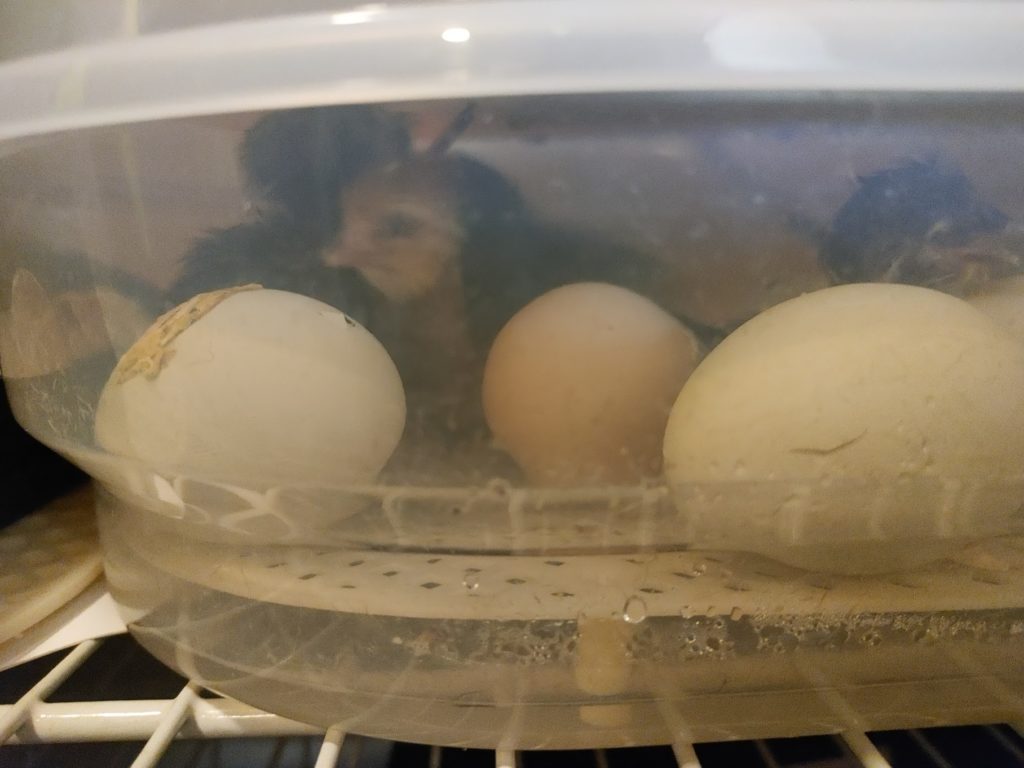
Ultimately, we want two sets of birds: layers and meat birds. We have found a couple of good local sources for replacement layers which means we won’t need to worry about keeping a breeding flock for layers. As for our meat birds, we expect that we will need to use a dual-purpose breed as we haven’t found a meat breed that seems like a good bet for breeding. Orpingtons are our first experiment. If they have too much trouble with heat or aren’t financially viable, we will try another breed.
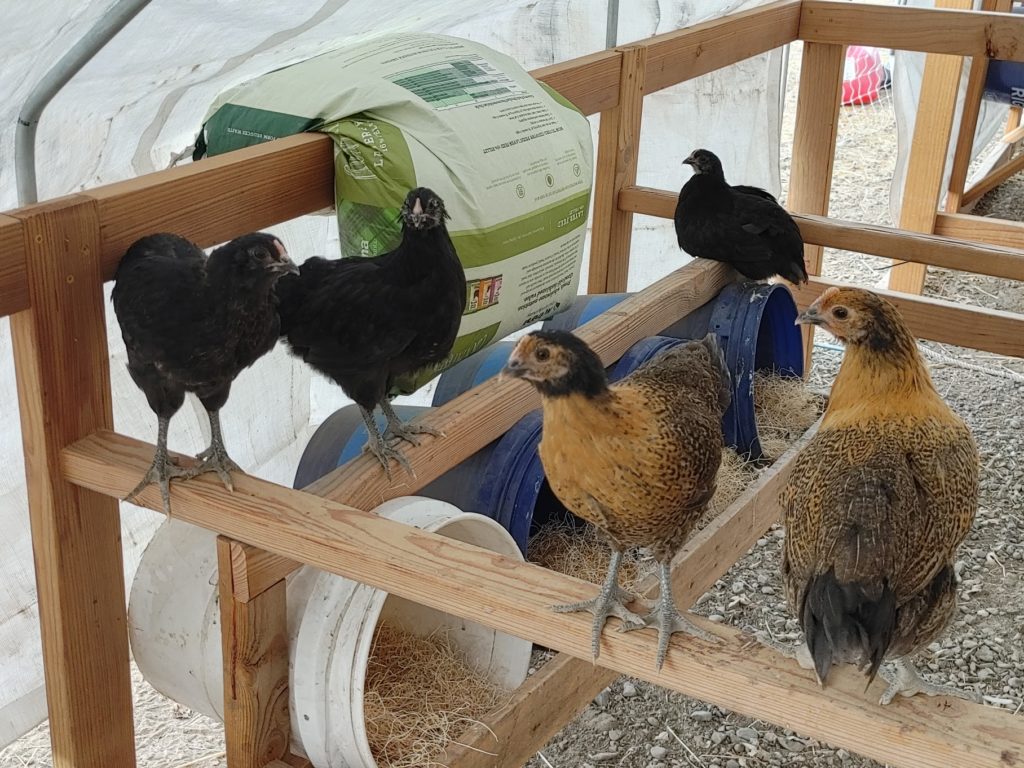
In the meantime, round two of the eggs produced seven chicks and all the chicks are big enough they’ve moved from the brooder to a tractor to the main flock. We’re taking a break from our experiments in hatching for the moment to work on some other projects that we’ll attempt to post about soon. As for Sting? He now has a fully developed crow, but could still hold his own in a rock band.

